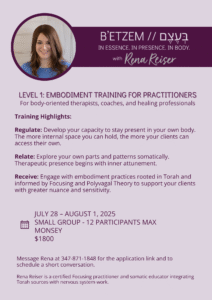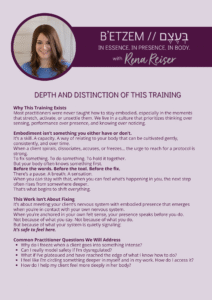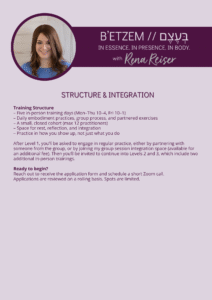For the woman who’s tired of functioning but not feeling
“Why do I feel like I’m doing everything I’m supposed to – taking care of the kids, work, home – but inside I feel numb, disconnected, and like I’m just going through the motions? I’m not exactly depressed, but I’m not really living either. What’s wrong with me?”
The Longing Beneath the Question
With this question, I hear a woman who is longing for more in life: longing for more connection, more vitality, longing to be more present. She wants to feel like she has a sense of choice in her life, that she has some control over her decisions and the way she feels.
What I See in Her
I see it very often. She’s not alone. So many women in the world are struggling with this today: disconnected from themselves, functioning on autopilot. And even though being surrounded by others who are struggling doesn’t necessarily make us feel better, there can be some comfort in knowing we’re not alone.
If many people around us are going through the motions but not really connected to their lives, it means that the world as a whole is disconnected from itself. And the reason this is happening is because our nervous systems get stuck in freeze.
Freeze is a combination of fight-or-flight and shutdown. It’s like pressing on the gas and the brakes at the same time. The nervous system gets stuck in this response, with energy rushing through the body, but a brake that’s so strong it holds us back from moving forward. That keeps us numb and not able to fully feel or be present in the richness of life.
What I Long For This Woman to Feel
I want this woman to feel a sense of being understood, a sense of belonging. And I want her to understand that the world as a whole struggles with recognizing and working with this in a way that doesn’t overload the system.
The reason she hasn’t gotten answers for this is because the world struggles with it on such a deep level that the answers aren’t commonly available in so many methodologies out there. It takes a very specific way of working through functional freeze to come out of it.
What Makes This Approach Different
The struggle with functional freeze is that it hides in plain sight. These women seem like they’re functioning; they’re getting things done. They can often muster up the energy to take care of what needs to be done: in their families, in their work. Often they come across as perfectionistic.
But cognitive approaches don’t work here. You can’t just “decide” your way out of functional freeze.
And often, they know what could help them. They know the tools. But because they’re in functional freeze, they can’t bring themselves to use those tools due to procrastination, which is one of the symptoms of functional freeze.
So we can’t force or push our way through this. The solution is in a slow, gentle way – through the body.
It starts with being able to be with the sense of functional freeze in the body, finding what it feels like, going into it, understanding what those blocks are, and engaging with the felt sense of the freeze.
That’s what allows it to start to melt.
As the freeze melts, the nervous system gains more capacity. And when the system has more capacity, things begin to shift. Procrastination fades – not because we fight it, but because we now can move. And it all starts with finding the felt sense, which can be hard when opposing energies are stuck in the system. That’s why this work must be sensitive, specific, and careful.
For the Woman Who’s Afraid to Be Seen
If you’re reading this and thinking, “That’s me, but I don’t think I can do this kind of work with other people watching,” I want you to know:
We meet you where you’re at.
That defense mechanism, the one that says “don’t let people see me,” is there to protect you. And we don’t want to get rid of it. We start slow.
You get to share as much or as little as you want. Nobody has to be watching you or hear what’s going on inside of you.
You can choose to think something instead of expressing it out loud. You and/or your therapist can have their eyes closed.
There are ways to do this work that honor where your system is at.
Because where you’re at is the only place we can start. If we try to push you past what’s safe for your nervous system, that will only keep you stuck longer.
For Practitioners: Is This You?
If you’re a practitioner reading this and this description resonates, I invite you to pause and ask yourself:
Am I also in functional freeze?
If so many people in the world are stuck in this state, is it possible that you are too?
And also, can you recognize clients of yours who are in this state?
If yes, then it’s time to learn how to work with their nervous systems, not against them.
Want to go deeper into this work?
These kinds of questions and the answers that unfold are at the heart of what my participants experience in my facilitator training. If this speaks to you, and you want to bring more embodiment and presence into your practice as a therapist, coach, or healer, you’re welcome to learn more about the training.
The next facilitator training begins in two weeks on July 28.
To join, you’ll need to fill out an application and have a short call with me so we can make sure it’s the right fit.
More details are in the flyers below.



